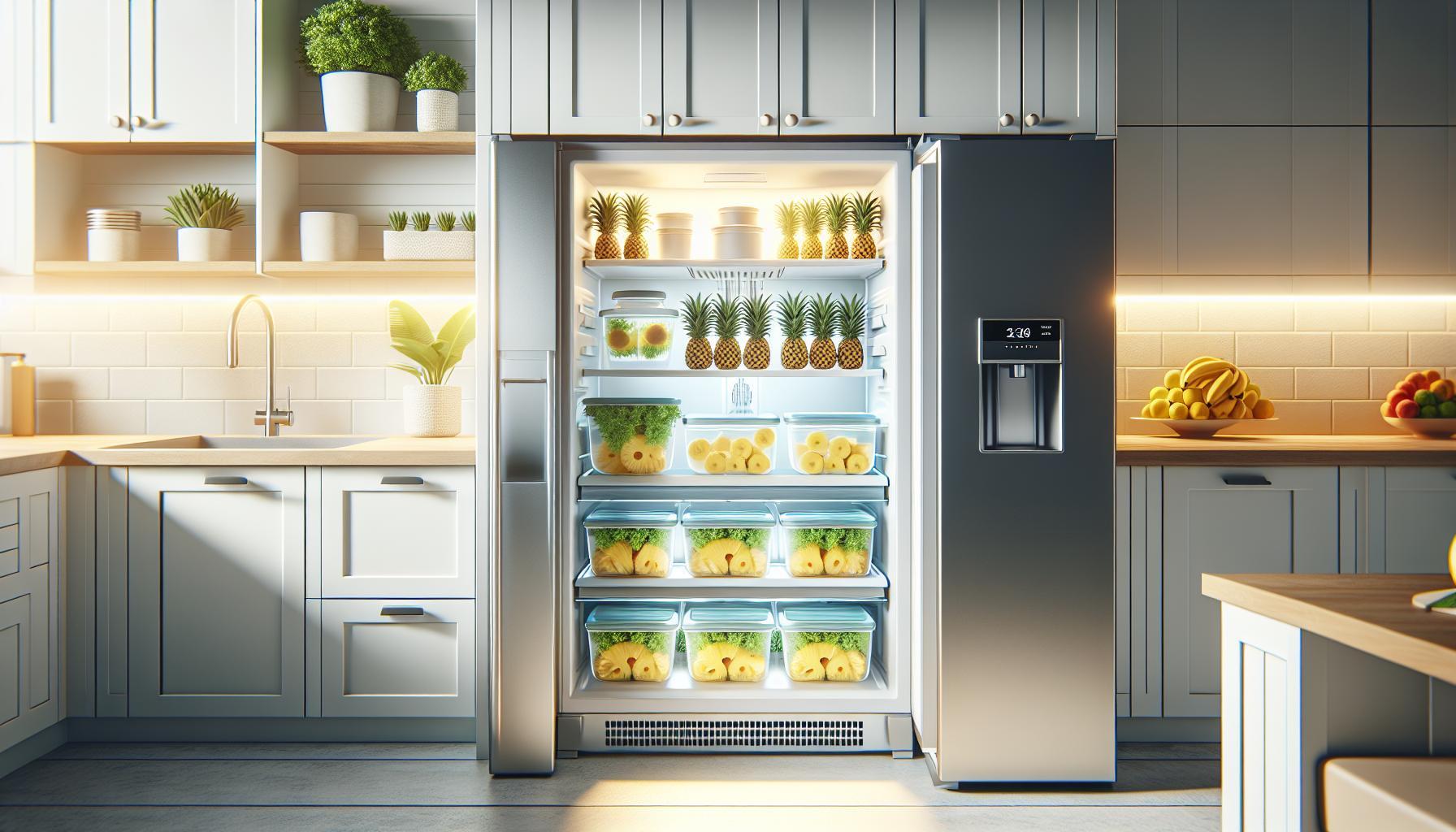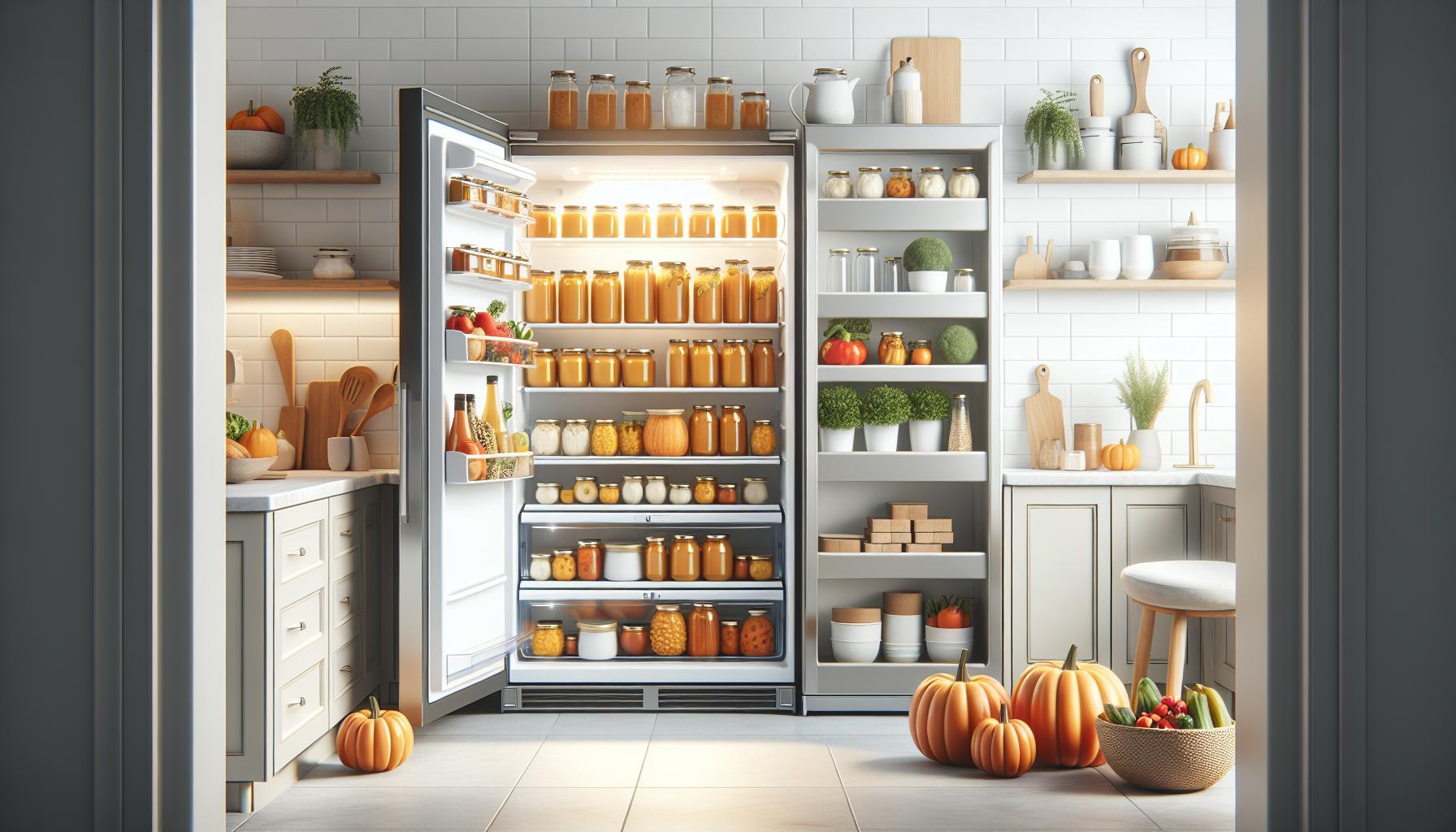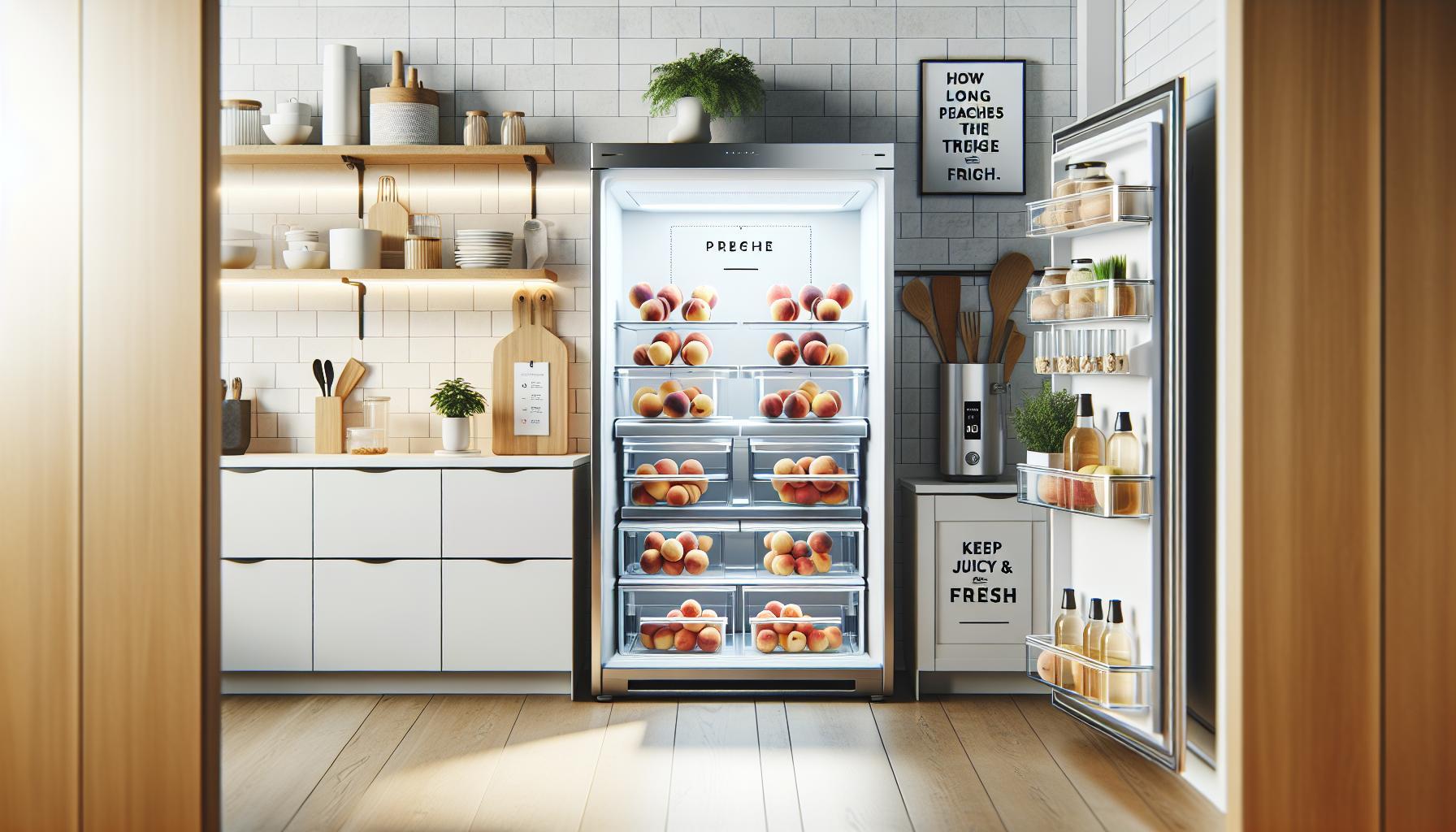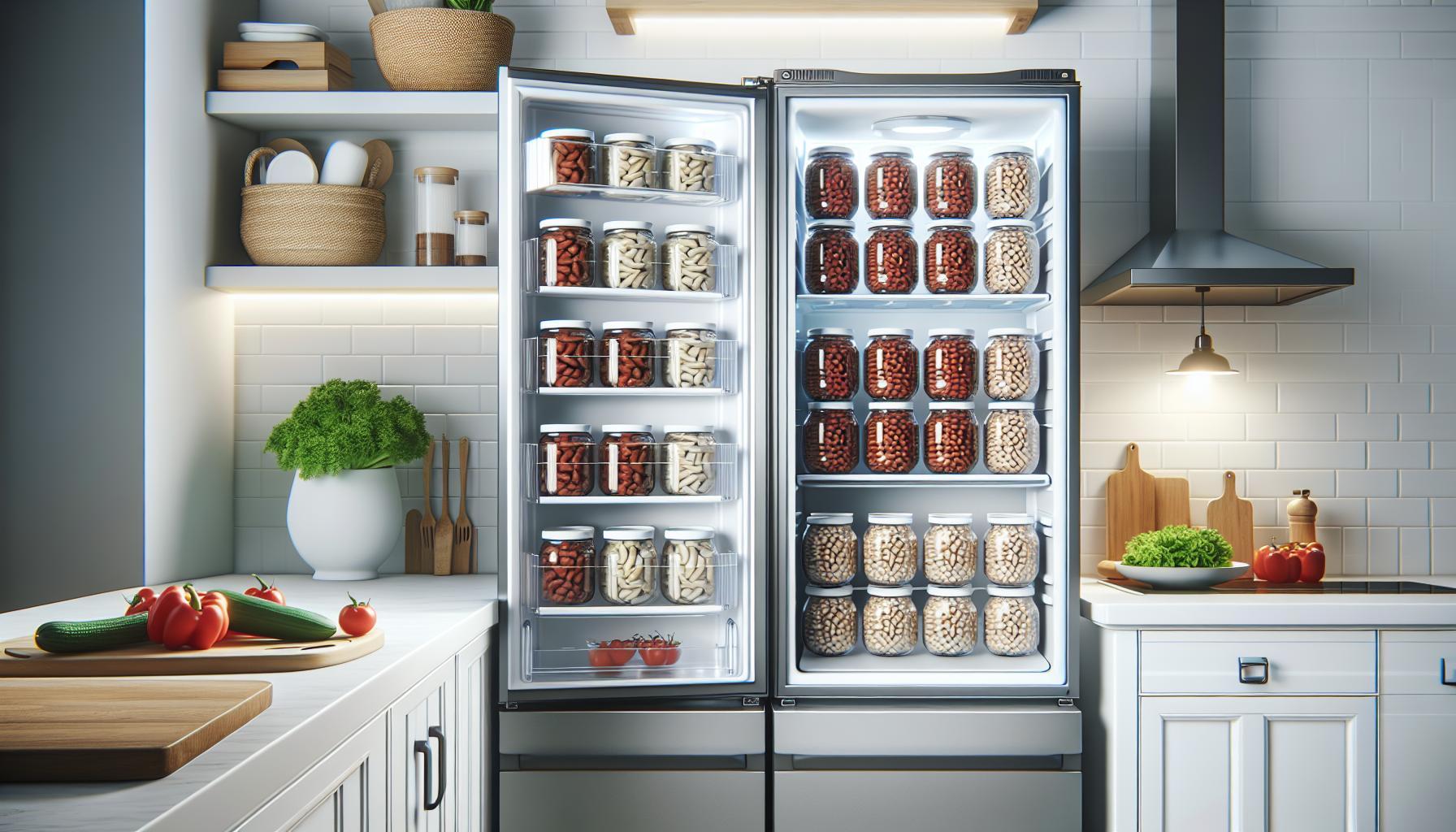Did you know that fresh pineapple is not only delicious but also packed with nutrients that can boost your health? However, once you slice into that juicy fruit, you may wonder how long it will stay fresh in your fridge. Understanding the shelf life of pineapple is essential for maintaining its sweetness and avoiding food waste.
In this guide, we’ll explore how to store pineapple properly to maximize its flavor and freshness. Whether you’re preparing for a tropical feast or just enjoying a healthy snack, knowing the ideal storage conditions can help you make the most of this tropical delight. Get ready to unlock the secrets to preserving pineapple’s luscious taste and enjoy it for days to come!
How Long Can You Store Pineapple in the Fridge?
Pineapples, with their vibrant flavor and numerous health benefits, can be a delightful addition to your diet, but knowing how to store them properly is crucial for preserving their freshness. When stored in the refrigerator, a whole, uncut pineapple can last for about 1 to 2 weeks. This timeframe allows the pineapple to retain its natural sweetness and juiciness. Once you’ve cut the pineapple, however, the clock starts ticking faster-the cut pieces will typically last in the fridge for about 3 to 5 days before they begin to deteriorate in quality.
To ensure your pineapple remains as fresh as possible, it’s important to consider a few factors. Whole pineapples should be kept in the fruit crisper drawer of your refrigerator to maintain humidity and prevent them from drying out. For cut pineapple, it’s best to store the pieces in an airtight container. This not only keeps them moist and reduces the risk of absorbing odors from other foods in the fridge but also helps to limit exposure to air, which can cause quicker spoilage.
Proper storage isn’t just about extending shelf life; it also enhances your culinary experience. Over time, a pineapple can lose its characteristic sweet taste and succulent texture if not stored correctly. To maximize enjoyment, consume your fresh pineapple as soon as possible and relish it while still at its peak flavor.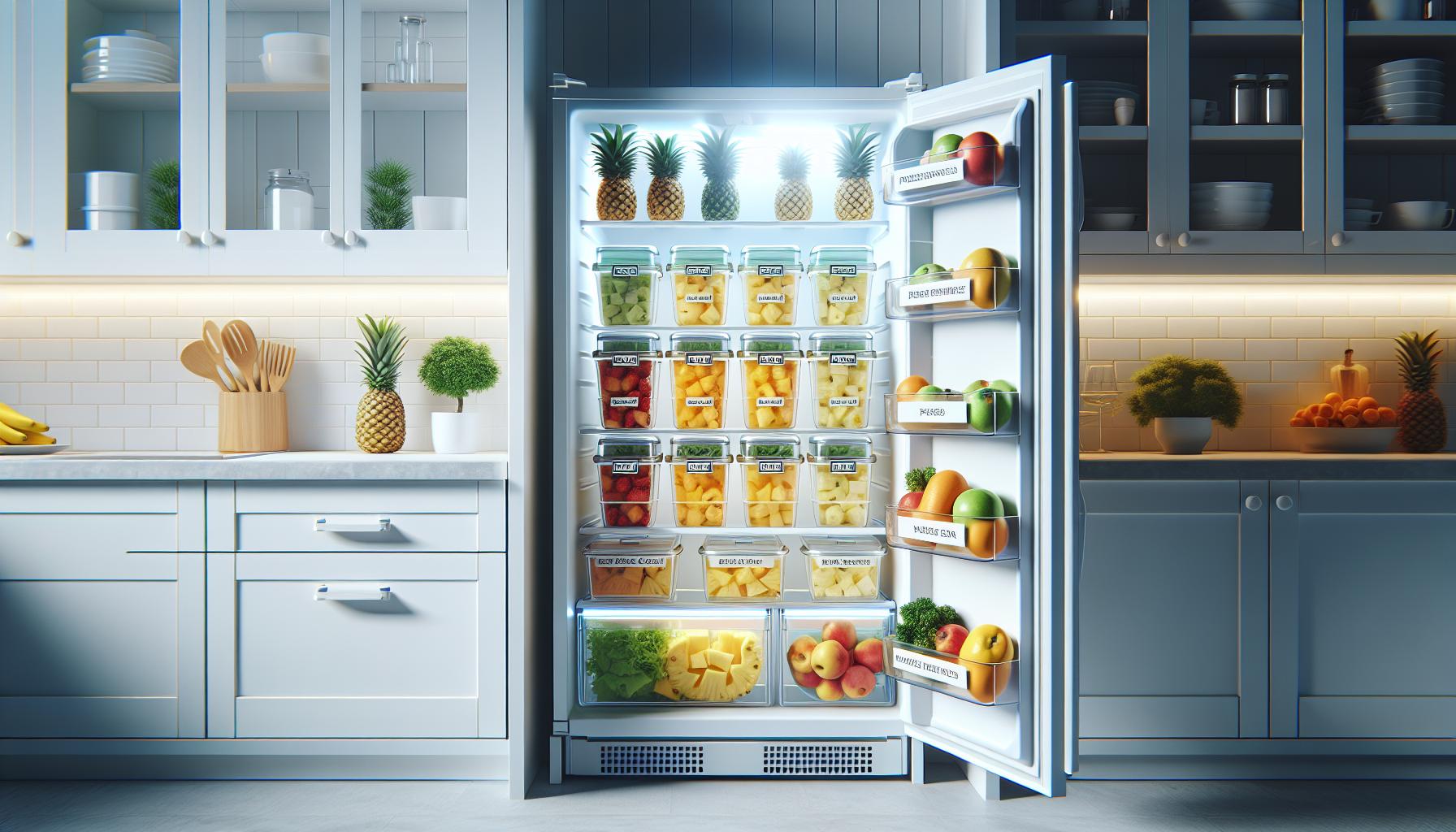
Understanding Shelf Life: Fresh vs. Cut Pineapple
When it comes to enjoying pineapple, understanding its shelf life is crucial for preserving its sweet and juicy flavor. Whole, uncut pineapples can typically stay fresh in your refrigerator for about 1 to 2 weeks. This extended time frame benefits from the pineapple’s natural protective skin, which helps retain moisture and prevent spoilage. However, once you cut into that vibrant fruit, the shelf life shortens significantly.
Cut pineapple will generally remain fresh for only 3 to 5 days when stored properly in the fridge. This rapid decline in freshness is due to increased exposure to air, which can lead to quicker spoilage and loss of flavor. To ensure cut pineapple stays as delicious as possible, it’s best to store it in an airtight container. This minimizes contact with air, helping to lock in moisture and flavor while also preventing the fruit from absorbing odors from other foods in the fridge.
To further enhance the lifespan of your pineapple, consider these practical tips: for whole fruits, place them in the crisper drawer of your refrigerator where humidity levels are higher. For cut pieces, using a container that seals tightly will not only help maintain freshness but also make it convenient for quick snacks or meal additions. Being mindful of these storage strategies can significantly improve your pineapple experience, allowing you to savor its natural sweetness longer and reducing food waste.
Signs Your Pineapple is Spoiled: What to Look For
Pineapple is a beloved tropical fruit, renowned for its sweet, tangy flavor and juiciness. However, like all fresh produce, it eventually spoils. Recognizing the signs of spoilage can help you avoid an unpleasant surprise when you go to enjoy this delicious fruit. When assessing a pineapple’s freshness, consider several key indicators.
One of the first things to examine is the pineapple’s exterior. Fresh pineapples should have a firm, intact skin that is free from significant blemishes, soft spots, or mold. If you notice any darkened areas or a general mushiness when you press the surface, it’s a clear sign that the fruit is past its peak. Additionally, keep an eye out for an overly sour or fermented smell. While pineapples do have a naturally sweet aroma, an off or strong odor signals that spoilage is likely underway.
Cut pineapples require greater scrutiny as they deteriorate more quickly. In this case, look for changes in texture and color. Fresh cut pineapple should be bright yellow with a juicy, firm texture. If the pieces start to turn brown or develop a slimy film, they should be discarded. Moreover, if the cut fruit emits a sour smell or starts to feel sticky, these are definitive signs you should throw it out to prevent foodborne illness.
Lastly, proper storage can extend the enjoyment of your pineapple and delay the onset of spoilage. Always store cut pineapple in airtight containers in the refrigerator, and keep whole pineapples in the crisper drawer to maintain humidity. Regularly check your fruit for any signs of spoilage, so you can enjoy the best of what this tropical delight has to offer while it’s fresh.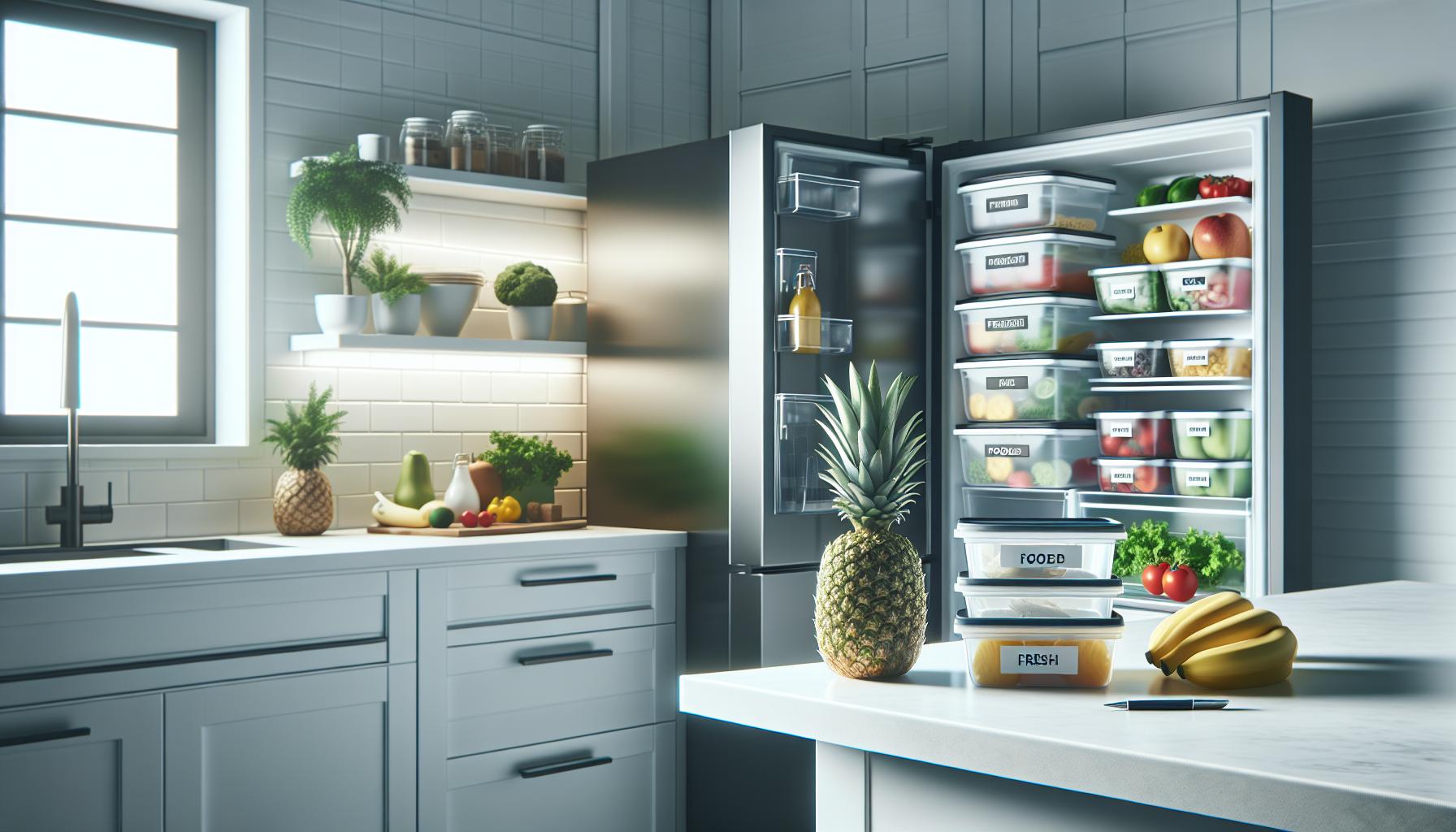
Tips for Maximizing Pineapple Freshness
To enjoy the full flavor and sweetness of pineapple, proper storage techniques are crucial. Pineapples can be a delightful addition to your diet, but their shelf life can vary significantly based on how they are handled and stored. Following a few simple tips can maximize the freshness of both whole and cut pineapples, ensuring that every bite remains delicious and safe to eat.
Start by storing whole pineapples in the fridge, ideally in the crisper drawer, which is designed to maintain humidity. This environment helps prevent them from drying out. However, if you have already cut a pineapple, it’s essential to keep the pieces in an airtight container. The exposure to air can cause the fruit to lose moisture and flavor quickly. Additionally, keeping cut pineapple in the fridge can extend its freshness for about 3 to 5 days.
Another effective strategy for maintaining sweetness is to keep the pineapple away from ethylene-producing fruits, such as apples and bananas. Ethylene gas can hasten ripening and spoilage, causing the pineapple to become overripe more quickly. Always check for any signs of spoilage, such as a sour smell or changes in texture, and consume leftover pineapple promptly to reduce the risk of foodborne illness.
For longer-term storage, freezing pineapple is a great option. To do this, cut the pineapple into chunks and arrange them on a baking sheet lined with parchment paper. Freeze the pieces for a few hours before transferring them to a freezer bag or airtight container. This method prevents the chunks from sticking together and can help you retain the fruit’s flavor for up to 6 months. Remember to label the containers with the date to keep track of freshness!
In summary, by utilizing airtight containers for cut fruit, storing whole pineapples in humid environments, keeping them away from ethylene-producing produce, and freezing for long-term storage, you can maximize the freshness and sweetness of pineapple. These practices will ensure that your tropical treat remains enjoyable and safe to eat.
Best Practices for Storing Pineapple in the Fridge
To keep pineapple fresh and flavorful in the fridge, it’s crucial to use the right storage methods that cater to its unique qualities as a perishable fruit. Whole pineapples can be stored in the fridge’s crisper drawer, where humidity levels are ideal for maintaining moisture without causing spoilage. When storing a whole pineapple, be sure to keep it upright to avoid bruising the fruit, which can lead to quicker deterioration.
Once you’ve cut into your pineapple, the preservation strategy changes significantly. Place the cut pieces into an airtight container to minimize their exposure to air and prevent them from drying out. Ideally, consumption should occur within 3 to 5 days of cutting to ensure optimal freshness and taste. Always use clean utensils when handling cut pineapple to reduce the risk of introducing bacteria that could lead to spoilage.
It is also important to consider the company your pineapple keeps. Keep it away from ethylene-producing fruits, such as bananas and apples. Ethylene gas not only accelerates the ripening process but can cause the pineapple to spoil prematurely. Regularly check your stored pineapple for any signs of spoilage, such as an off smell or slimy texture, which can indicate that the fruit should be discarded.
Lastly, if you’re looking to extend your pineapple’s shelf life beyond the fridge, freezing is a smart option. Cut the pineapple into bite-sized chunks and arrange them on a baking sheet lined with parchment paper to freeze individually. Once frozen, transfer the chunks to a freezer-safe bag or container, where they can last for up to 6 months, preserving their sweetness and quality for later use in smoothies or desserts. Proper storage not only enhances the lifespan of your pineapple but also maintains its delicious flavor, making it a delightful addition to your meals.
How to Freeze Pineapple for Long-Term Storage
Freezing pineapple is an excellent way to preserve its sweet flavor and nutritional benefits for extended periods. Not only does it allow you to enjoy this tropical treat beyond its typical shelf life, but it also makes for convenient use in various recipes. Freezing prevents spoilage and maintains the juicy texture of the fruit, making it a perfect addition to smoothies, desserts, or even savory dishes.
To start the freezing process, follow these steps for optimal results:
- Select Fresh Pineapples: Choose ripe, unblemished pineapples. The fruit should be fragrant and free from any dark spots or signs of spoilage, ensuring that you’re starting with the best quality possible.
- Preparation: Wash the outside of the pineapple thoroughly. Using a sharp knife, carefully cut off the top and the base, followed by slicing off the tough skin. Be sure to remove any “eyes” (the small brown spots) to avoid bitterness.
- Cut Into Chunks: After peeling, cut the pineapple into bite-sized chunks or slices. Uniform size not only allows for even freezing but also makes portioning easier when you’re ready to use them later.
- Flash Freeze: To prevent the pineapple pieces from sticking together, line a baking sheet with parchment paper. Spread the chunks in a single layer on the sheet and place it in the freezer for about 1-2 hours, or until the pieces are solid.
- Storage: After the chunks are frozen, transfer them to a freezer-safe zip-top bag or airtight container. Be sure to remove as much air as possible to minimize freezer burn. Label the container with the date so you can keep track of storage times.
- Usage: Frozen pineapple can be kept in the freezer for up to six months while retaining its flavor and texture. When you’re ready to use it, add the frozen pineapple directly to smoothies without defrosting or let it thaw in the refrigerator for use in recipes.
By following these straightforward steps, you can maximize the freshness and enjoy the delicious taste of pineapple long after its harvest season. Proper freezing techniques ensure that this juicy fruit retains its sweetness and nutritional profile, making it a nutritious addition to your diet whenever you please.
Creative Uses for Leftover Pineapple
Using leftover pineapple can be a delightful way to bring tropical flavor to your meals and snacks. This versatile fruit can transform simple dishes into something special, offering a mixture of sweetness and acidity that complements both savory and sweet recipes. Whether you’re aiming to reduce food waste or simply enjoy the unique taste of pineapple, there are countless creative uses for it.
One popular option is to incorporate leftover pineapple into smoothies. Blend chunks of pineapple with your choice of yogurt, spinach, or other fruits for a refreshing drink loaded with vitamins. Because frozen pineapple retains its flavor and texture, you can use it straight from the freezer-making smoothies not just convenient but also a great way to pack in nutrients. Additionally, pineapple is an excellent topping for oatmeal or yogurt bowls. Simply chop up the leftover pieces and add them to your breakfast, enhancing both flavor and presentation.
Another appealing use is incorporating pineapple into savory dishes. Adding it to stir-fries can provide a wonderful contrast to rich and spicy ingredients. Combine pineapple chunks with vegetables, chicken, or tofu and your favorite stir-fry sauce for an easy, flavorful meal. Likewise, it pairs wonderfully with grilled meats; a pineapple salsa made with diced onion, cilantro, and lime can freshen up grilled chicken or fish dishes, introducing a zesty pop that brings balance to the protein.
For dessert lovers, leftover pineapple can be grilled or baked to caramelize its sugars, creating a delicious treat. Drizzle with a bit of honey and serve as a topping for ice cream or incorporate into tarte tatin for a creative twist on this classic dessert. You can also chop and bake it into muffins or cakes, elevating your baked goods with its natural sweetness and moisture.
Lastly, consider preparing a refreshing pineapple salad. Toss together leftover pineapple with greens, avocado, and a citrus vinaigrette for a light yet satisfying dish that works as a side or a main course on its own. Adding nuts or seeds can enhance texture and provide additional nutrients, making it a well-rounded meal choice.
In summary, the possibilities are endless when it comes to using leftover pineapple. From breakfast to dinner and even dessert, this tropical fruit can enhance a wide variety of dishes. Embrace these creative ideas to enjoy your pineapple fully while minimizing waste and maximizing flavor.
Health Benefits of Fresh Pineapple: Why Storage Matters
Fresh pineapple is not just a delicious tropical treat; it also packs a punch of health benefits that can be significantly influenced by how you store it. Pineapple is rich in vitamins, minerals, and enzymes such as bromelain, which can aid digestion and reduce inflammation in the body. However, to maximize its nutritional value and flavor, proper storage is essential. When kept in the right conditions, fresh pineapple can maintain its sweetness and health benefits for a longer period.
To ensure that your pineapple remains fresh, it’s important to understand the differences in storage based on whether it’s whole or cut. Uncut fresh pineapple can be stored at room temperature for about 1 to 2 days, but refrigeration can extend its freshness to up to a week. Once cut, pineapple should always be stored in the refrigerator in an airtight container, ideally wrapped tightly to prevent moisture loss, which can lead to faster spoilage. A cut pineapple is best consumed within 3 to 5 days to enjoy its optimal taste and benefits.
Another reason why storage matters is the fruit’s natural deterioration over time. As pineapple ages, it can lose not just its sweetness but also its nutritional potency. For example, vitamin C levels can decline as the fruit sits. Keeping it in the fridge slows down enzyme activity and microbial growth, helping to preserve those valuable nutrients. If you find yourself with excess pineapple, freezing is an excellent option to retain both the sweetness and health benefits, allowing you to enjoy it long after its prime.
By being mindful of how you store pineapple, you can make the most out of its health benefits while reducing waste. Incorporating properly stored pineapple into your diet can boost your intake of essential nutrients and provide a refreshing treat that supports overall health.
Pineapple: Safe Storage and Food Safety Guidelines
Proper storage of pineapple not only extends its shelf life but also preserves its delightful sweetness and vibrant nutritional profile. To ensure both quality and safety, it’s crucial to adhere to specific guidelines tailored to how the pineapple is stored. When it comes to storing a whole pineapple, keep it in a cool, dry place away from direct sunlight for about 1 to 2 days. If you opt for refrigeration, a whole pineapple can last up to a week while retaining its juiciness and flavor. In contrast, once the pineapple has been cut, immediate refrigeration is essential. Always place cut pineapple in an airtight container and consume it within 3 to 5 days for the best taste and health benefits.
Understanding food safety is paramount when dealing with fresh produce like pineapple. To minimize the risk of spoilage and possible foodborne illnesses, always wash your hands and surfaces before handling the fruit. Also, ensure that any utensils or cutting boards used are clean to avoid cross-contamination. If you notice any signs of spoilage, such as an off smell, excessive softness, or mold, it’s best to discard the pineapple. Utilizing a ‘first in, first out’ rule can help in managing freshness; always consume the oldest fruits first to ensure nothing goes to waste.
For those looking to enjoy pineapple beyond its shelf life, freezing is a viable option that preserves both sweetness and nutritional value. To freeze, cut the pineapple into pieces and arrange them on a baking sheet to create a single layer. Once they are solid, transfer the pieces to a freezer-safe bag or container. This method helps prevent clumping and makes it easy to grab a handful for smoothies or snacks. Always label your containers with the date so you can keep track of how long the pineapple has been stored.
By adhering to these safe storage and food safety practices, you can enjoy the bright, tropical taste of pineapple while minimizing waste and maximizing its health benefits. Keeping these guidelines in mind allows for a worry-free experience when enjoying this delicious and nutritious fruit.
Common Myths About Pineapple Storage Debunked
Many myths surround the storage of pineapple, leading to confusion about how to keep this tropical fruit fresh and flavorful. One common misconception is that whole pineapples can be stored indefinitely at room temperature. In reality, while a whole pineapple can last for 1 to 2 days outside of refrigeration, placing it in the fridge can extend its shelf life up to a week, helping to retain its sweet taste and juicy texture.
Another prevalent myth is the idea that cut pineapple must be consumed immediately or will spoil overnight. In fact, if stored correctly in an airtight container, cut pineapple can remain fresh for 3 to 5 days. Many people fear that refrigeration alters the sweet flavor of pineapple; however, the opposite is true. Keeping cut fruit in the fridge not only helps preserve its sweetness but also prevents the growth of harmful bacteria that can thrive at warmer temperatures.
Additionally, there’s a belief that all fruits can be stored together without consequence. With pineapple, it’s important to note that it emits ethylene gas, which can cause nearby fruits to ripen faster and potentially spoil. It’s wise to store pineapple separately or with other ethylene-sensitive fruits to maintain the quality of both.
Understanding these myths can significantly impact food safety and enjoyment. By following proper storage guidelines and debunking these misconceptions, you can fully enjoy the delicious and nutritious benefits of fresh pineapple, ensuring it remains a delightful addition to your meals and snacks.
The Impact of Temperature on Pineapple Sweetness
Pineapple’s sweetness is not only one of its most appealing qualities but also something that can be influenced significantly by temperature. When stored at the right temperature, this tropical fruit can retain its natural sugars and delicious taste much longer. Understanding how temperature affects pineapple can help you enjoy this fruit’s sweetness at its best.
Fresh pineapples kept at room temperature can begin to lose their flavor and sweetness within days. While they can last about 1 to 2 days outside, it’s recommended to refrigerate them to maintain their over-all quality. In the fridge, whole pineapples can stay fresh for up to a week, preserving their sweetness and juiciness. However, once cut, the dynamics change; refrigerated cut pineapple can remain fresh for 3 to 5 days in an airtight container, ensuring the sugars remain intact and minimizing exposure to degrading temperatures.
Cold temperatures can help prevent the enzymatic reactions that lead to the fruit’s deterioration. Storing pineapple at a consistent temperature between 32°F and 40°F (0°C – 4°C) is ideal. This environment not only safeguards the sweetness of the fruit but also slows down the growth of bacteria, keeping it safe for consumption. It’s essential to avoid fluctuating temperatures, as frequent changes can contribute to spoilage and loss of flavor.
To maximize the sweetness and freshness of pineapple, follow these best practices for storage:
- Store whole pineapples in the refrigerator to prolong their life.
- After cutting, place pieces in an airtight container to limit exposure to air and moisture.
- Avoid placing pineapple near ethylene-producing fruits, such as apples and bananas, to prevent premature ripening.
- Consume refrigerated pineapple within the recommended timeframes for the best flavor.
By adhering to these guidelines, you will not only preserve the delightful sweetness of pineapple but also enhance your overall experience with this delicious fruit.
Q&A
Q: How can I tell if my pineapple is still good?
A: To determine if your pineapple is still good, check for a sweet smell, firm texture, and vibrant color. If it feels mushy or has brown spots, it may be spoiled. Always trust your senses; if it smells sour or off, it’s best to discard it.
Q: Can I store cut pineapple in water?
A: Yes, you can store cut pineapple in water to help maintain its moisture. However, it’s best to use an airtight container to prevent excess moisture and bacterial growth. Change the water daily for optimal freshness.
Q: How long can I keep pineapple juice in the fridge?
A: Pineapple juice can last about 5 to 7 days in the fridge after being opened. Store it in a sealed container to keep its freshness and flavor. If it begins to taste off or smells strange, it’s better to dispose of it.
Q: Does storing pineapple in the fridge affect its sweetness?
A: Yes, storing pineapple in the fridge can help preserve its sweetness by slowing down the sugar breakdown process. Ensure it’s wrapped tightly to retain moisture and flavor, enhancing its natural sweetness.
Q: What is the best way to store whole pineapple in the fridge?
A: To store a whole pineapple in the fridge, keep it uncut and in a breathable bag or wrap it loosely. This allows air circulation while preventing moisture loss. Ideally, keep it on the main shelf instead of the crisper drawer.
Q: Can I use pineapple after the expiration date?
A: Pineapple can be consumed after the expiration date if it shows no signs of spoilage, such as off smells or textures. Always check for freshness indicators before consuming.
Q: How should I thaw frozen pineapple for use?
A: To thaw frozen pineapple, move it to the fridge for several hours or overnight. Alternatively, you can use the microwave on a defrost setting. Avoid leaving it at room temperature to prevent spoilage.
Q: What are the health benefits of eating fresh pineapple?
A: Fresh pineapple is rich in vitamins C and B6, antioxidants, and bromelain, which may aid digestion and reduce inflammation. Staying informed about the health benefits can motivate you to incorporate it more into your diet as you store it properly.
In Summary
Now that you know how long pineapple lasts in the fridge and how to keep its sweetness preserved, you can enjoy fresh, delicious pineapple without worry. Remember, for cut pineapple, it’s best consumed within 3-5 days, while whole pineapples can last up to a week. Don’t miss out-check your fridge right now and make sure you’re storing your pineapple correctly to maximize its flavor!
If you’re eager to explore more about fruit storage and culinary tips, be sure to read our articles on “Best Ways to Store Fresh Fruits” and “How to Tell if Pineapple is Ripe.” For more delicious recipes and food preservation techniques, subscribe to our newsletter! Your fridge will thank you as you discover more ways to enjoy fresh produce. Share your pineapple storage tips in the comments below and let’s keep the conversation going!

